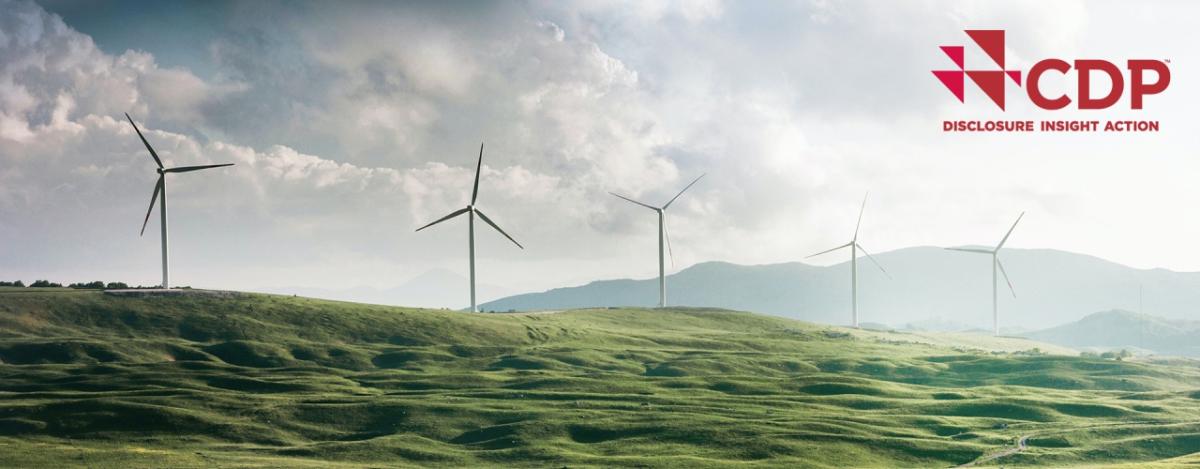How to Leverage CDP Reporting to Benefit Corporate Sustainability Initiatives
WSP USA has identified three essential areas for all organizations to prioritize when preparing and developing a CDP response to communicate sustainability efforts and progress.

CDP is a global nonprofit organization that develops disclosure questionnaires for companies and cities to report on their climate change, water security, forestry and supply chain management practices. CDP seeks to forge a sustainable economy built on transparency, accountability and collaboration.
Almost 6,000 investors with more than $110 trillion in assets, and more than 200 large purchasers with more than $5.5 trillion in procurement spend, have requested that thousands of companies disclose their environmental data through CDP. In 2021, more than 13,000 companies across 90 nations responded to CDP, representing a 35 percent increase over 2020.
When viewed from a business and sustainability perspective, responding to CDP has several benefits, including improving reputation, identifying critical risks and opportunities, and putting a spotlight on an organization’s sustainability programs.
How CDP Can Evolve Sustainability at an Organization
CDP pulls out key environmental criteria through its questionnaires, including such topics as:
- Governance
- Risks and opportunities
- Business strategy
- Targets and performance
- Emissions data
- Energy and water use
- Stakeholder and value chain engagement
Responding to CDP provides a public record of an organization’s sustainability effort and progress year after year, showing tangible advances over time.
The public nature of CDP responses has significant benefits that stakeholders can use to evolve environmental mitigation and disclosure initiatives, including:
- Benchmarking and driving progress: CDP offers a public-facing database of responses that enables consistent benchmarking across peers, partners, and leaders. Understanding where an organization’s sustainability efforts sit within the broader landscape can help drive action going forward and awareness around work done to-date.
- Informing stakeholders: From organizations that achieve top scores to those identified with room for improvement, disclosure can gain the attention of executive teams and investors. As more companies respond to CDP each year, and more investors request disclosure, leadership teams will take increasing note of what is being disclosed and its implications for the organization. Regularly responding to CDP can boost sustainability on an organization’s priority list. CDP provides a pathway for developing sustainability teams to grow internal buy-in for sustainability initiatives and for robust teams to maintain their importance throughout the organization.
- Increasing transparency: The Task Force on Climate-related Financial Disclosures (TCFD) was developed in 2017 to provide guidance for environmental disclosures that encourage effective climate-informed financial decisions. CDP has taken this guidance and has designed its questionnaires to follow the TCFD recommendations. As such, CDP acts as a key player in supporting climate-informed investment and procurement decisions. Responding to CDP can indicate to investors and other stakeholders that the organization is dedicated to transparency and aligned with TCFD, signaling performance and leadership.
Preparing for Successful Disclosure
CDP reporting can be an undertaking that requires substantial time and resources. Collecting data, developing responses across several different teams throughout an organization, and getting approval for public disclosure can pose bandwidth challenges for many organizations.
WSP USA has identified three essential areas for all organizations to prioritize when preparing and developing a CDP response:
- Maintain open dialogue with internal stakeholders to secure support for disclosing around risk management, legal counsel, procurement, government affairs and finance, among other key topics. Working across teams can often lead to conversations on what CDP is, why the requested information is needed and what information can be publicly disclosed. WSP recommends engaging with these internal stakeholders on an ongoing, year-round basis to consistently improve disclosure from one year to the next. Using identified gaps as a conversation point to get internal buy-in for expanded disclosure can drive progress. Organizations should discern what can or cannot be disclosed to ensure that the best possible response has been developed and that all stakeholders agree on what and how to report.
- Emphasize the “Risks and Opportunities” section of the questionnaires when developing a response and engaging with internal stakeholders. These sections have become increasingly important in terms of scoring impact and what investors want to see. To excel in these sections, organizations must identify multiple climate- and water-related risks and opportunities, conduct scenario analyses, define substantive financial or strategic impacts, and provide quantitative information outside of greenhouse gas and water inventory data.
- Pay close attention to the reporting guidance and scoring methodology documents CDP provides each year. Every year CDP updates its questionnaire and scoring methodology to drive action. To maximize a response score, WSP recommends articulating every response in a manner that meets the scoring criteria: mirror the language used in CDP’s scoring document, structure the response with subheadings, write concisely and think of the scoring criteria as an explicit checklist. Also, when drafting content, be sure to adhere to the character limitations for each response.
Looking Ahead
CDP and other disclosure methods can showcase an organization’s efforts while also setting the stage for future endeavors. From gaining the attention of executive teams and the public, to developing a competitive edge against peers and satisfying investors, transparency and progress in environmental reporting can help an organization develop a robust sustainability program.
CDP 2021 responses were made public this year on Oct. 13, and scores were released on Dec. 7.
CDP has proposed key changes to the 2022 questionnaires, which will be finalized and released in January 2022 and include:
- expanded governance questions asking if and how board competencies have been assessed with respect to managing climate, water and forest risks;
- details on transition plans and current and projected OPEX and CAPEX required to align with net-zero emissions by 2050;
- additional details on tracking and assessing targets and performance;
- details on supplier requirements;
- ·new questions on biodiversity; and
- modifications to questions on renewable energy to align with RE100.
Note that CDP has set an intention to integrate all three questionnaires – Climate Change, Water Security and Forests – in 2023. This is a considerable development that organizations should track and prepare to address.
[To subscribe to Insights, contact the editorial staff at insights@wsp.com.]

